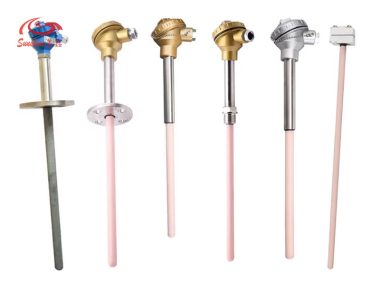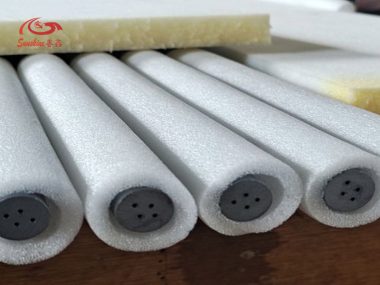What is Pressureless Sintered Silicon Carbide?
Pressureless sintered silicon carbide ceramics are high purity, ultra-fine silicon carbide powder as raw materials, adding a small amount of sintering additives, such as boron, carbon, etc., in atmospheric pressure inert gas or vacuum atmosphere, sintering at high temperature from 1950 to 2100℃, Very strong sintering bonds between the material grains are formed, the product is almost completely dense, with excellent mechanical properties of ceramic materials.
Direct Sintered SiC is a better grade than Reaction Bonded SiC and is commonly specified for high-temperature work and hard-faced seal components.
The technics summary of Pressureless sintered silicon carbide ceramics
1. Principle of non-pressure sintering
Pressureless sintering is a process that high temperature causes material transfer and diffusion between powder particles to achieve densification without external pressure.
2. To choose High purity silicon carbide powder
High-purity silicon carbide powder is usually used as raw material. These powders have lower impurity levels to improve the performance of the final product. Thus it ensures high-quality silicon carbide ceramics products.
3. Control of sintering temperature and time
It is important for achieving high density and excellent properties of silicon carbide ceramics to make sure appropriate sintering temperature and time.Too high or too low temperature and too long or too short time may affect the quality of the material.
Unique advantages of Pressureless sintered silicon carbide ceramics
The silicon carbide product obtained by non-pressure sintering is almost completely dense and has excellent mechanical properties.
One advantage of this process is that it allows the use of various molding methods to produce products with different shapes, and the application of appropriate additives can bring high strength and toughness.
1.Performance retention at high temperatures.
Even at extremely high temperatures, press-free sintering of high-purity silicon carbide ceramics can maintain the stability of its structure and properties, which makes it have great potential in high-temperature applications.
2.Oxidation resistance.
In addition to high temperature stability, this material also has good oxidation resistance and is able to work stably in oxidizing environments for long periods of time without significant degradation.
3.High density.
Pressureless sintering technology can densify sic powder under high temperature and high pressure to form a dense structure.
This property significantly improves the mechanical strength and wear resistance of the material.
4.Excellent mechanical properties
Pressureless sintered silicon carbide ceramics offer excellent compressive and bending strengths because of their high density, which prevents them from breaking or deforming under heavy loads.
5.Good thermal shock resistance
Pressureless sintered silicon carbide ceramics are difficult to break or damage and can remain stable in an application sector where temperatures change quickly.
Pressureless sintered silicon carbide ceramics’application field
With its good bending strength, excellent wear resistance and good corrosion resistance, press-free sintered silicon carbide ceramics play an important role in modern industrial manufacturing.
Aerospace:
Pressureless sintered silicon carbide ceramics are a perfect material for aerospace applications because of their excellent temperature resistance and good bending strength.
It is capable of producing key components such as engine components, turbine blades and nozzles to improve the performance and reliability of aerospace spacecraft.
Electronic devices:
It is an ideal material for electronic devices due to its exceptional electrical insulating qualities and good bending strength. It can be used to manufacture high-performance heat sinks, substrates, and packaging materials.
LED lighting:
It is the perfect material for LED lighting equipment due to its high thermal conductivity and exceptional heat resistance.
To improve the light efficiency and lifespan of LEDs, it can be utilized to manufacture efficient cooling substrates and housings.
Power electronic equipment:
It has a wide range of application prospects in power electronic equipment due to its excellent corrosion resistance and good bending strength.
To improve the efficiency and reliability of power electronic devices, it can be used to provide effective heat sinks, substrates, and insulating materials.
Metallurgical field:
It is the perfect material for the metallurgical area due to its excellent corrosion resistance and good bending strength.
It can be used to manufacture high temperature furnace nozzles, metal melting furnaces and metal nozzles and other equipment to extend the service life of the equipment.
Automotive manufacturing:
It is the perfect material for car manufacturing because to its exceptional wear resistance and good bending strength.
Car chassis, brake systems, and turbocharger nozzles are among the parts that can be made using it to improve the performance and safety of the cars.
Chemical field:
Good bending strength and excellent corrosion resistance make it an ideal material in the chemical field.
Equipment like pipeline valves and reactor nozzles can be made with it to increase their service life and resistance to corrosion.



